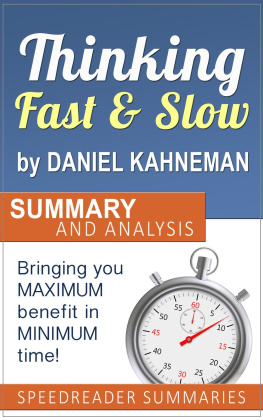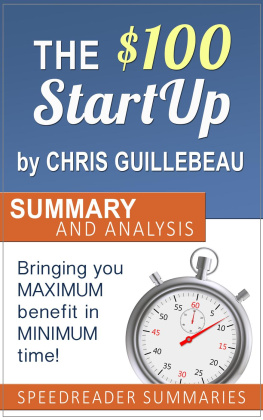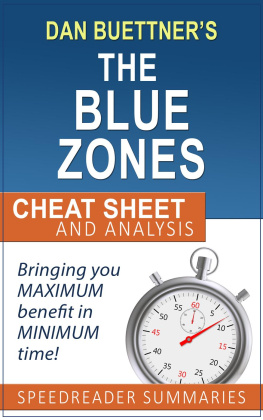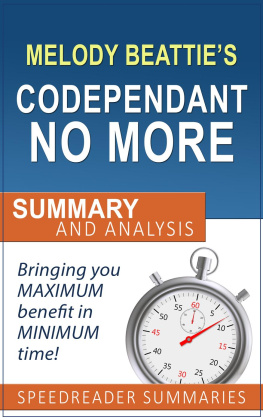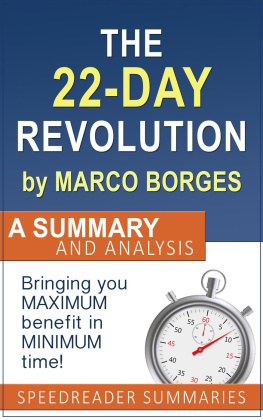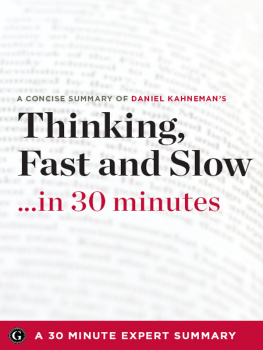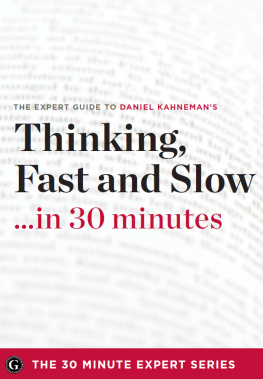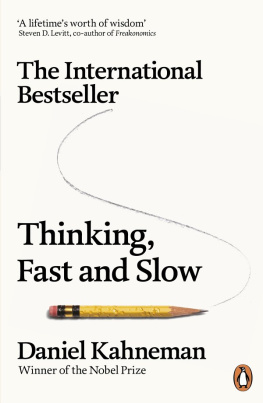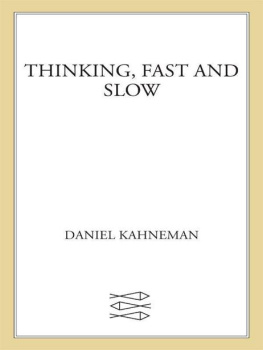SpeedReader Summaries - Thinking Fast and Slow by Daniel Kahneman: Summary and Analysis
Here you can read online SpeedReader Summaries - Thinking Fast and Slow by Daniel Kahneman: Summary and Analysis full text of the book (entire story) in english for free. Download pdf and epub, get meaning, cover and reviews about this ebook. year: 2017, publisher: SpeedReader Summaries, genre: Romance novel. Description of the work, (preface) as well as reviews are available. Best literature library LitArk.com created for fans of good reading and offers a wide selection of genres:
Romance novel
Science fiction
Adventure
Detective
Science
History
Home and family
Prose
Art
Politics
Computer
Non-fiction
Religion
Business
Children
Humor
Choose a favorite category and find really read worthwhile books. Enjoy immersion in the world of imagination, feel the emotions of the characters or learn something new for yourself, make an fascinating discovery.
- Book:Thinking Fast and Slow by Daniel Kahneman: Summary and Analysis
- Author:
- Publisher:SpeedReader Summaries
- Genre:
- Year:2017
- Rating:4 / 5
- Favourites:Add to favourites
- Your mark:
Thinking Fast and Slow by Daniel Kahneman: Summary and Analysis: summary, description and annotation
We offer to read an annotation, description, summary or preface (depends on what the author of the book "Thinking Fast and Slow by Daniel Kahneman: Summary and Analysis" wrote himself). If you haven't found the necessary information about the book — write in the comments, we will try to find it.
Your Quick and Simple Summary and Analysis of Thinking Fast and Slowby Daniel Kahneman
Inside, youll find:
About Thinking Fast and Slowby Daniel Kahneman
Best selling author and Nobel Prize Winner Daniel Kahnemans purpose in his book Thinking Fast and Slow is to bring within the grasp of everyday understanding the power of psychology, perception, illogical thinking, irrationality, and behavioral economics. Arguably Daniel Kahnemans most famous publication, the book summarizes research that he has conducted over decades and decades. Inside, Kahneman explains how we, as humans, often think and behave irrationally due to faulty intuition, biases, and erroneous mental shortcuts, and how these patterns of thought can hold us back.
Please note that this summary of Thinking Fast and Slow by Daniel Kahneman is NOT the original book and is meant to be read as a supplement to the original.
About SpeedReader Summaries
Thanks so much for your interest in SpeedReader Summaries! We strive to save what is your most precious and limited resourcetime.
Do you ever feel like you just want your favorite non-fiction books to get to the point? Are you tired of wasting time weeding through fluff and anecdotes to get to the meat of the material?
SpeedReader Summaries carefully distill and analyze the key points of your favorite books and provide additional commentary and resources to supplement your understanding of the material. Inside every SpeedReader summary, youll find a thirty-second overall summary of the book, brief summaries of the key points of each chapter, a custom analysis, and additional resources like discussion questions, relevant articles, other books, and even quizzes.
At SpeedReader Summaries, bringing you maximum benefit in minimum time is our main objective!
SpeedReader Summaries: author's other books
Who wrote Thinking Fast and Slow by Daniel Kahneman: Summary and Analysis? Find out the surname, the name of the author of the book and a list of all author's works by series.

